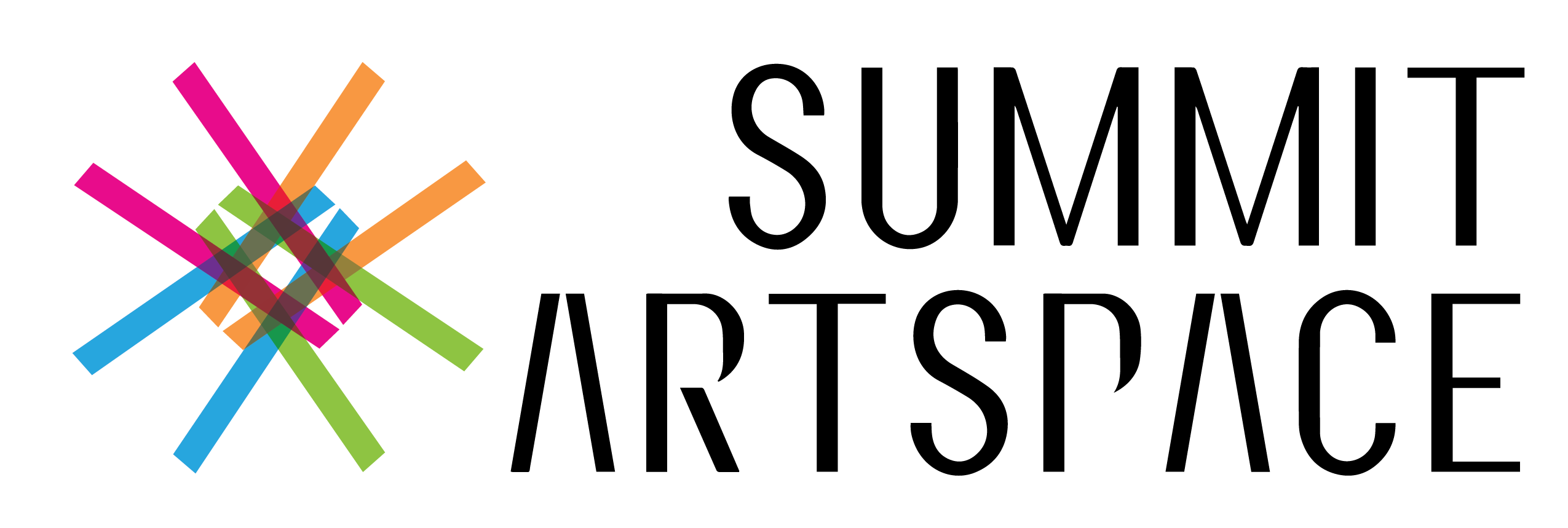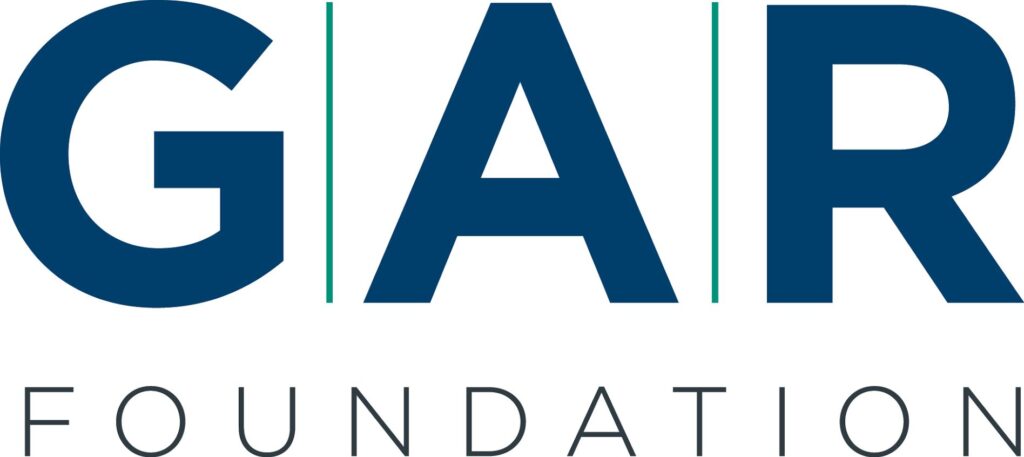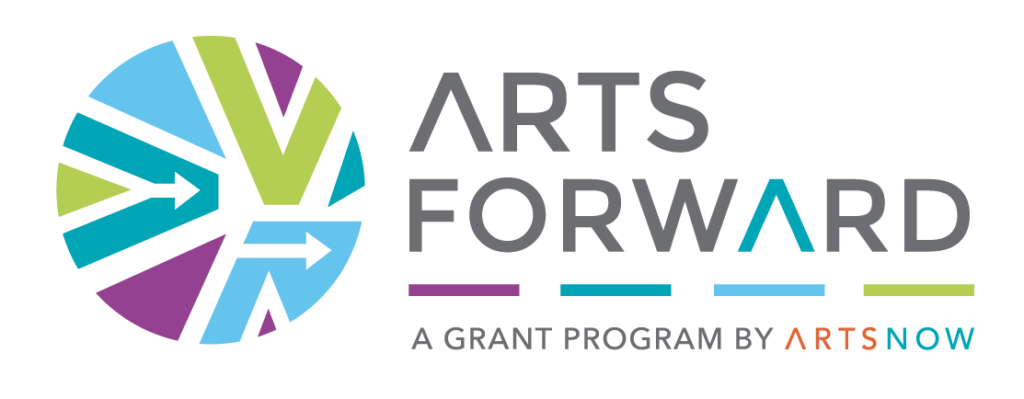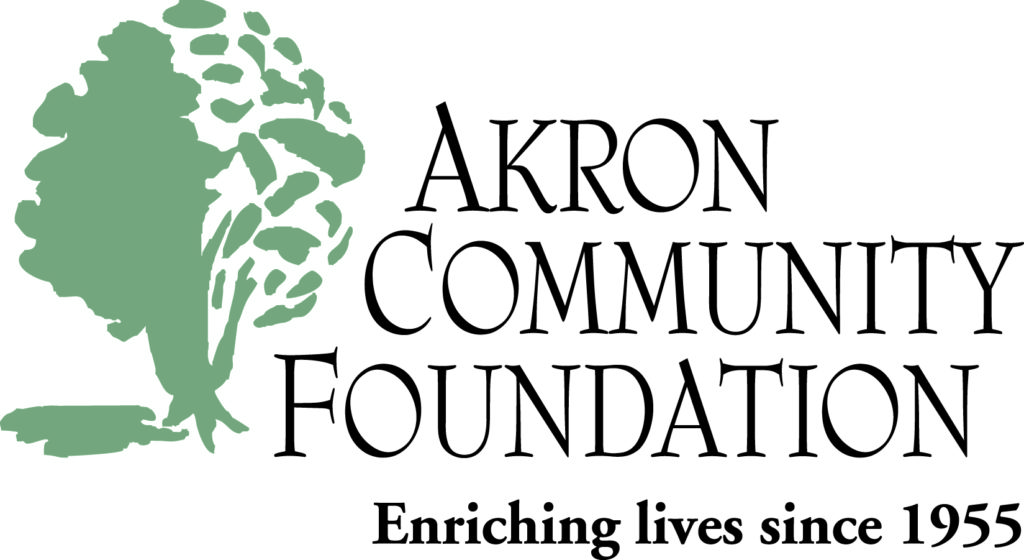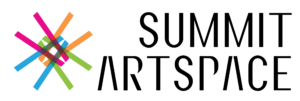
Waffle Weave Invitational | Group Exhibition
Forum Gallery
The Waffle Weave structure has a unique ability to transform a textile—seemingly a two-dimensional surface—into a three-dimensional object with depth through repeated pyramidal cells. Historically, this structure was used to create highly functional textiles for cleaning or drying, and to help insulate the body with tiny pockets of air. In this exhibition, fiber artists and craftspeople explore the many ways this weave structure can be used. Curated by Stephen Tornero.
Curatorial Statement
This show was conceived as an idea to focus on a specific structural variable of a textile, and see how many different variations artists, artisans, and craftspeople would be able to produce. While researching the development of weaving technology, a loom with the capability to create complex structures was developed around 600 CE simultaneously in different cultures. This structure could have been produced by these looms, but also could have been designed much earlier by hand-manipulation of threads by the weaver. The waffle structure is so unique in its ability to transform a textile- seemingly a two dimensional surface- into a three dimensional object that has depth as shown by many repeated square pyramidal cells. Historically, this structure was used to create a textile that would hold water in its cells for cleaning or drying, or to help insulate the body with tiny pockets of air. This structure can be modified by changing the color of the threads with which it is woven, the fiber content of those threads, or even by expanding the amount of threads used in a cell, expanding the scale.
– Stephen Tornero
Special thanks to Bradley Hart, Summit Artspace resident artist, for photography of virtual exhibitions!
Did you know?
Most of the artwork on display at Summit Artspace is for sale.
Click on the artwork images for pricing and more information about each piece.
If you would like to purchase any art, please visit a staff member or volunteer at the front desk, or email natalie@summitartspace.org.
1- Jaya Griscom | Tactile Cells | $930
Woven wool with dyes and acrylic pigments
Artist Statement: Textiles invite touch. Fibers hold a unique relationship with the body, as they clothe and comfort us. My work is an aesthetic celebration of this relationship, deeply inspired by how enjoyable textiles feel.
I learned to weave as a young child, which launched a life-long fabric obsession that I’ve nurtured throughout my traditional fine art education and career. As a Silicon Valley resident, I live surrounded by modern computers born from binary code that weavers developed. Threading warp strings through my heddles, I literally stay in touch with the digital DNA powering all innovative tech gadgetry. Marrying modern devices with my ancient craft of weaving, I embrace contemporary technology to better understand people. Through 3D scans of bodies, I capture the contours of the figure. That data allows me to scientifically draft the human form cartographically. I navigate the figure. I chart the physical body in fabric.
My recent work combines prints, repurposed clothes, and 3D contours into large-scale textile artwork. I develop an intimate tactile rapport with my materials and the sense of touch motivates my practice alongside aesthetics. Cloth is soft, warm, and permeable. I relish those physical sensations as I map out the topography of my fabrics’ pasts and the people that shape them.
Artist Bio: Jaya Griscom is a textile artist, clothing designer, and printmaker. Passionate about her creative practice from an early age, Jaya began her formal fine art education with a Visual Art Certificate from Idyllwild Arts Academy in Idyllwild, California. She then moved to Annandale on Hudson, New York to study at Bard College. As a double major in Studio Art and Religious Studies with a concentration in Gender and Sexuality Studies, Jaya expanded her experimental quilting and sewing practices with in-depth studies of sculpture and printmaking. She diversified her coursework as a Hutcheson Travel Grant recipient for independent thesis research in India on the significance of the color red in Hindu Goddess worship. Upon graduation, she moved back to California and completed an additional degree from Cañada College in Fashion Design and Small Business. She has taught extensively in the Bay Area, as the COO for Marvegos Fine Art School and the Weaving Teacher at Peninsula School. Jaya has recently completed a Zero Waste Fellowship with the San Mateo County Office of Education and residencies at InCahoots in Petaluma, California, The Weaving Mill in Chicago, Illinois, and Praxis Digital Weaving Lab in Cleveland, Ohio. Jaya is currently an artist in residence at the Cubberley Studio Artist Program in Palo Alto, California, where she designs, prints, dyes, weaves, and sews predominantly textile-based mixed media work and handmade clothing out of her studio.
2- Leslie Groff | Opposites Attract | $425
Handwoven linen
Artist Statement: Grounded by the ancient traditions of the textile and weaving crafts, my work is inspired by the tactile qualities of my materials and their interconnectedness to the natural world around us. That interconnectedness is brought to light when these time worn processes transform the ephemeral into the permanent. The fleeting color of a natural dye plant may only be vibrant for a few weeks, but that same color can remain bright for years when fixed in fiber. The linear, step by step processes of textile work are also an inspiring element to me. Woven structures can sometimes be intricately complex, but each pattern still harkens back to the ultimate simplicity of over one, under one. The process and repetition come together bit by bit and thread by thread to create the whole.
Artist Bio: Leslie Groff is an artist living and working in Pittsfield Massachusetts. She earned a BFA in Fiber Arts from Massachusetts College of Art and Design, and has exhibited work throughout Massachusetts and the Northeast. She currently teaches weaving as the Weavery Program Leader at Stanton Home, in Great Barrington, MA. Her work is focused on hand weaving for fine art, as well as functional textiles. She also practices hand spinning, sewing, and dyeing amongst many other fiber arts processes.
3- Leslie Groff | Light and Shadow I | $450
Handwoven linen, naturally dyed silk
Artist Statement: Grounded by the ancient traditions of the textile and weaving crafts, my work is inspired by the tactile qualities of my materials and their interconnectedness to the natural world around us. That interconnectedness is brought to light when these time worn processes transform the ephemeral into the permanent. The fleeting color of a natural dye plant may only be vibrant for a few weeks, but that same color can remain bright for years when fixed in fiber. The linear, step by step processes of textile work are also an inspiring element to me. Woven structures can sometimes be intricately complex, but each pattern still harkens back to the ultimate simplicity of over one, under one. The process and repetition come together bit by bit and thread by thread to create the whole.
Artist Bio: Leslie Groff is an artist living and working in Pittsfield Massachusetts. She earned a BFA in Fiber Arts from Massachusetts College of Art and Design, and has exhibited work throughout Massachusetts and the Northeast. She currently teaches weaving as the Weavery Program Leader at Stanton Home, in Great Barrington, MA. Her work is focused on hand weaving for fine art, as well as functional textiles. She also practices hand spinning, sewing, and dyeing amongst many other fiber arts processes.
4- Janice Lessman-Moss | #482E, Dancing with the Distance V, ©3/20 | $700
Linen, waxed linen, wire, painted and resist dyed warp, with ebonized cherry mount
Artist Statement: The “either/or” possibility of the Random Walk theory reinforces my primary interest in dualities which reside at the core of the weaving process, literally and figuratively. The perpendicular axes of warp and weft, associated with ideas of the spiritual and earthly, permanence and transience, finite and infinite, also illustrate that opposites are not mutually exclusive, but complementary, essential aspects of the whole. That basic interlacement, creates the smallest of patterns, a square cell, that can be modeled and choreographed in numerous variations of scale and orientation. Contrasting materials and color establish a network that integrates the somewhat elusive reflective shapes with the solid, dynamism of line. Patterns move rhythmically within the field, often pulsating in response to the center, expanding and contracting in a conflation of time and space, echoing the micro and macrocosmic.
Artist Bio: Janice Lessman-Moss is a weaver who embraces the unique vocabulary of digital design in relation to the binary functioning of threads on the loom to create her art. She has been awarded numerous Individual Artist Fellowships from the Ohio Arts Council beginning in 1984, and received an Arts Midwest/National Endowment for the Arts Fellowship in Crafts. Lessman-Moss won the prestigious Governor’s Award for the Arts in Ohio in 2016, the Arts Alive Lifetime Achievement Award, Summit Arts Space in 2018, the Cleveland Arts Prize Lifetime Achievement Award in 2019, and a coveted United States Artists Fellowship also in 2019. Her work been presented throughout the United States and internationally, including solo exhibitions at the Kent State University Museum, Galleria Willa in Lodz, Poland, the Museum of Fine Art and Culture in Las Cruces, New Mexico, and Praxis Gallery in Cleveland. In addition to exhibiting her digital weavings, she has created commissioned work for a Medical Research Institute, Fitchburg, Wisconsin; the National Polymer Innovation Center at the University of Akron and for private residences. A native of Pittsburgh, Pennsylvania, Lessman-Moss resides in Kent, Ohio where she is Emeritus Professor of Art at Kent State University. She received her BFA from the Tyler School of Art, Temple University and MFA from the University of Michigan.
5- Jen P. Harris | Sphinx | $500
Hand-woven cotton, canvas, thread, and acrylic paint on wood stretcher bars
Artist Statement: These small weaving-painting hybrids are part of an ongoing, experimental body of work in which I am developing a heterogeneous formal language that both honors and questions histories and conventions of painting and weaving.
Artist Bio: Jen P. Harris (they/them) is a process-driven artist working with painting, drawing, textiles, and installation. They hold a B.A. from Yale University and an M.F.A. in painting from Queens College of the City University of New York. Harris has shown their work throughout the US, presenting solo exhibitions at edgar gallery (2020, Los Angeles, CA); CSPS Hall (2016, Cedar Rapids, IA); Rockland Center for the Arts (2015, West Nyack, NY); Leslie-Lohman Museum and Daniel Cooney Fine Art (2010, 2011, New York, NY); Delaware Center for the Contemporary Arts (2010, Wilmington, DE); and John Davis Gallery (2010, Hudson, NY). Upcoming exhibitions include a solo show of drawings at St. Ambrose University (Davenport, IA) and group shows at Abigail Ogilvy (Los Angeles, CA), Kink Contemporary (Cleveland, OH), and Abattoir (Cleveland, OH). Harris is the recipient of a 2023 Satellite Fund Grant from SPACES (Cleveland, OH), a 2012 Fellowship in Painting from the New York Foundation for the Arts (New York, NY), and grants from the Puffin Foundation, Astraea Lesbian Foundation for Justice, Ohio Arts Council, and Iowa Arts Council. They have been artist-in-residence at Praxis Digital Weaving Lab, Soaring Gardens Artist Retreat, Virginia Center for the Creative Arts, Women’s Studio Workshop, and Vermont Studio Center. Their works are collected privately and can also be found in public and corporate collections including New York Foundation for the Arts, Morgan Stanley, and Stead Family Children’s Hospital (University of Iowa). Raised in Baltimore, Harris currently lives and works in Cleveland, Ohio.
6- Jen P. Harris | Oscillator | $1,500
Hand-woven cotton, canvas, gesso, and thread on wood stretcher bars
Artist Statement: These small weaving-painting hybrids are part of an ongoing, experimental body of work in which I am developing a heterogeneous formal language that both honors and questions histories and conventions of painting and weaving.
Artist Bio: Jen P. Harris (they/them) is a process-driven artist working with painting, drawing, textiles, and installation. They hold a B.A. from Yale University and an M.F.A. in painting from Queens College of the City University of New York. Harris has shown their work throughout the US, presenting solo exhibitions at edgar gallery (2020, Los Angeles, CA); CSPS Hall (2016, Cedar Rapids, IA); Rockland Center for the Arts (2015, West Nyack, NY); Leslie-Lohman Museum and Daniel Cooney Fine Art (2010, 2011, New York, NY); Delaware Center for the Contemporary Arts (2010, Wilmington, DE); and John Davis Gallery (2010, Hudson, NY). Upcoming exhibitions include a solo show of drawings at St. Ambrose University (Davenport, IA) and group shows at Abigail Ogilvy (Los Angeles, CA), Kink Contemporary (Cleveland, OH), and Abattoir (Cleveland, OH). Harris is the recipient of a 2023 Satellite Fund Grant from SPACES (Cleveland, OH), a 2012 Fellowship in Painting from the New York Foundation for the Arts (New York, NY), and grants from the Puffin Foundation, Astraea Lesbian Foundation for Justice, Ohio Arts Council, and Iowa Arts Council. They have been artist-in-residence at Praxis Digital Weaving Lab, Soaring Gardens Artist Retreat, Virginia Center for the Creative Arts, Women’s Studio Workshop, and Vermont Studio Center. Their works are collected privately and can also be found in public and corporate collections including New York Foundation for the Arts, Morgan Stanley, and Stead Family Children’s Hospital (University of Iowa). Raised in Baltimore, Harris currently lives and works in Cleveland, Ohio.
7- Rachel Wittels | Knotty Waffle September 2021 – May 2022 | $250
Cotton and acrylic thrums
Artist Statement: Fiber is a tradition of storytelling. My textiles center narratives from within my own communities of humans, habits, and relationships to inform design. Expanding upon the practice of visualizing history within my field, my textiles archive moments of my sociality—physical, tactile contributions that I offer back into the communities which they serve. I examine specific qualitative content surrounding a person or community to which I have a bond. My source material comes from anecdotal and daily places, for instance, text threads, daily and personal habits. After looking closely to find the cadences and emotional energies that construct the identities expressed in my data, I ask my textiles to preserve these narratives in the systems and patterns of their structure. The collection of tactile information directly builds the foundation for the design and function, making the outcome of the work dictated by the characteristics of content and connections I am exploring The tactile data present in “Knotty Waffle” comes from the tied together scrap threads, left over from every fiber project I created from my 2021-2022 school year. Like a scrapbook, each thread holds a memory of an artwork that when woven together creates a new artwork in its own right. The extra-prominent grid created from the waffle weave structure visually emphasizes this weaving as remnants of past other weavings.
Artist Bio: Rachel Wittels is an artist and art teacher from Rochester, New York. She earned her BS/MS.ED in Art Education with a minor in technical theater costuming from Nazareth College in Rochester. Relocating in 2017, Wittels spent four years as an emerging artist and art educator living in New York City. Teaching high school art at Fiorello H. LaGuardia High School for Music, Art, & Performing Arts, she primarily worked with students on fashion and digital arts, and fostered community partnerships with institutions such the New York Philharmonic Orchestra and Marc Jacobs Fashion Company. In partnership with her teaching, Wittels’ studio practice is rooted in textile arts- most notably weaving, data visualization and the shared history between these two processes. Her recent exhibitions include Indiana University’s Time Constraint, at Kokomo Art Gallery, the Detroit Artist Market’s 2023 Annual Scholarship Exhibition, Cranbrook Academy of Art’s 2023 Graduate Art Exhibition at Cranbrook Art Museum in Bloomfield Hills Michigan, and the biannual 68th Rochester-Finger Lakes Exhibition at the Memorial Art Gallery in Rochester, New York. She has also been recently featured in Detroit based artist publication Clearline Zine Issue 004: Air, Fashion, Action and Issue 4 of New Visionary Art Magazine hosted by New York’s Visionary Art Collective. Her most recent relocation to Detroit, Michigan, has been in pursuit of her MFA at Cranbrook Academy of Art with the Fiber Department, which she achieved in May 2023.
8- Trey D. Gehring | Stacked | $150
Woven cotton yarn, crocheted acrylic yarn, fabric paint
Artist Statement: Stacked follows a line if investigation by the artist into a poststructuralist analysis of language as a system of symbols that lack meaning beyond context. The piece melds the namesake with the woven structure itself creating a hyper-literal interpretation of the exhibition’s theme. However, an understanding of the theoretical underpinning is unnecessary and secondary to the enjoyment of the whimsical and humorous nature of the work.
Artist Bio: Trey D. Gehring uses a variety of textile techniques, combining modern production technology, with traditional methods. Gehring’s works explore themes of identity, gender, masculinities, subversion, and queerness. Earning his bachelor’s and Master’s in Fine Art degrees at Kent State University, Gehring studied closely under Janice Lessman-Moss, a pioneer in creating art with digital weaving. Gehring has shown his work nationally and internationally. He was born in Baton Rouge, Louisiana, but currently resides in Kent, OH.
9- Chad Troyer | Calming Shores | $175
Jacquard-woven, gradating waffle weave; Cotton, linen, rayon, silk, birch
Artist Statement: The gradating structure allows for the weft to float acrost the surface of the weaving for varying lengths, from half an inch to nearly the whole width. The warp is allowed to float for varying lengths, but not nearly as long as the weft. After it was taken off the loom, the weaving was stretched. Parts of it were pulled, and others were left loose, allowing the floats to be accented by the folding and tautness of the cloth. The two pieces are the same piece of cloth cut apart, however they both display a different state of being: turbulent & calm.
Artist Bio: Chad Troyer is an artist working in textile practices, primarily weaving and dyeing. They graduated from Kent State University in 2022, receiving a BFA in Sculpture and Expanded Media, in addition to a BA in French. Their art uses the interlacement of yarn to craft a metaphor between the artist and their community, family, and environment. Chad is an instructor and the Digital Weaving Coordinator at Praxis Fiber Workshop.
10- Chad Troyer | Crashing Waves | $250
Hand Jacquard-woven, gradating waffle weave; Cotton, linen, rayon, silk, birch
Artist Statement: The gradating structure allows for the weft to float acrost the surface of the weaving for varying lengths, from half an inch to nearly the whole width. The warp is allowed to float for varying lengths, but not nearly as long as the weft. After it was taken off the loom, the weaving was stretched. Parts of it were pulled, and others were left loose, allowing the floats to be accented by the folding and tautness of the cloth. The two pieces are the same piece of cloth cut apart, however they both display a different state of being: turbulent & calm.
Artist Bio: Chad Troyer is an artist working in textile practices, primarily weaving and dyeing. They graduated from Kent State University in 2022, receiving a BFA in Sculpture and Expanded Media, in addition to a BA in French. Their art uses the interlacement of yarn to craft a metaphor between the artist and their community, family, and environment. Chad is an instructor and the Digital Weaving Coordinator at Praxis Fiber Workshop.
11- Stephen Tornero | Don’t Tell Me | $800
Hand dyed wool, acrylic rods
Artist Statement: This piece is part of a continuing study of material, color, and structure in textiles. I have been mesmerized with the “waffle weave” structure and its ability to create large, three dimensional pockets of space. This pieces experiments with the combination of the flexible, fibrous wool yarns with the rigid neon acrylic rods. These two materials are combined in a large textile in order to explore the effects that this unique weaving structure will have on these materials. This use these two opposing materials in the piece creates a dialogue between the traditional usefulness of this wool weaving and its display on the wall as a work of art.
Artist Bio: Stephen Tornero is an artist and teacher from Canton, Ohio. While working towards a Masters in Art Education at Kent State University, he had the chance to study weaving, and fell in love with this practice. Working in textiles allowed for the combination of vibrant colors, texture, pattern and transparency that was not successful in other media. Stephen currently teaches visual art and fashion design to 7th and 8th grade students at Plain Local Schools, and is an adjunct professor of Art Education at Kent State University. While these two practices don’t always intertwine, he believes that a strong art practice and a strong teaching practice enhance each other.
12- Stephen Tornero | Waffle Weave Samples
13- Deborah Silver | Waffle Weave Samples
14- Beatrice Bonanno | Thermal | $1,100
Linen, cotton, wool, acrylic
Artist Statement: Bea Bonanno’s work is an exploration of the human psyche through the interaction of texture, color, and shape. Patterns emerge from the synthesis of the invisible self given visual form. Motifs repeat, transforming with each iteration, like a memory being remembered. Thought-forms made solid colliding and interacting with one another over a background of feeling tuned by color.
Artist Bio: Bea is a fiber artist living in Lawrence, Kansas. She has a BFA in Textile Design from The University of Kansas and produces her work in her home studio. Each of Bea’s pieces are woven using multi-harness looms that allow her to create intricate patterns embedded into the fabric. Her material selections are based largely on color and texture to create relationships between forms that intrigue and challenge expectations of traditional tapestry weaving techniques.
15- Laicee Blackwell | Game Lights | $350
Photography, carnival game music playing too loud, sweaty hands, a prize won as a gift
Artist Statement: My artworks are a queer exploration and imagined history of me and for myself, created with hope and desire to commune with others seeking connection. Until my early twenties, I was isolated from, and not allowed to connect with, queer community or history. By utilizing queer visual language as a foundation to construct these pieces, I explore a disjointed placement fueled by a deep desire to belong while always feeling on the fringe of society and queer communities. I draw on queer cultural tropes and historical aesthetic lore interwoven with my own personal experiences navigating popularized ideas of what the queer experience is or is expected to be. This practice of making has allowed opportunities for me to heal through the use of humor and the deconstruction of old, closeted woes.
Artist Bio: Laicee Blackwell, from Evansville Indiana, is a visual artist who creates large scale sculptural textiles. Using processes of sewing, weaving, screen-printing, embellishment, and mined queer histories, they create what they call “queer maps” which explore their placement within queerness. Laicee’s work has been shown in exhibitions around the country in Kent State University Museum, Kent, OH, Indianapolis Art Center, Indianapolis, IN, The Studio Door, San Diego, CA, Tubac Center of the Arts, Tubac, AZ, River Oaks Square Center Alexandria, LA, Bauhaus Prairie Art Gallery, Newkirk, OK, and Parklane Gallery, Kirkland, WA. They received their B.S. in Studio Art with an emphasis in sculpture from the University of Southern Indiana in 2018 and their MFA in Sculpture and Expanded Media at Kent State University in 2023. There they held a position as Instructor of Record for the Intro to Sculptural Practices course.
16- Romy Anderson | Blend | $150
Hand dyed cotton yarn
Artist Statement: At its core, the foundation of a weaving is a grid. Through the process, the warp interconnects with the weft and together they create cloth. Math is heavily involved in my weavings. Counting threads helps keep the work geometric and organized. Weaving is technical, but the dye process to achieve such vibrant colors is very unconstrained and free. Color excites me, and weaving allows for new colors to be created by the different stands in the warp and weft. There is something very soothing about weaving. The repetitive nature and the methodical planning, leaves a lot of room for thinking and reflection when completing work.
Artist Bio: My name is Romy Anderson, short for Rosemary. I graduated from Kent State University’s Textile program. Art has always been a part of my life, but so has math. I had a decision to make when I was going off to college on what I wanted to pursue. I fell into the art route of things and found that I really loved weaving. I was able to combine my love of math, color, and art all into one (and of course some perfectionism). I have found a lot of inspiration in my work through travel. I recently came back from a semester abroad, and am still processing a lot of the amazing people and places I saw. I am eager to start incorporating more of this experience into my future work. I am currently based in Canton Ohio, and travel often up to Cleveland.
17- Stephen Drake | Breakfast Jacket | $300
Woven cotton textile
Artist Statement: When I was asked if I would like to participate in the Winter exhibit I was excited to be able to mix my skill of sewing with the theme of “waffle weave”. Working with a waffle texture proved a bit of a challenge as fabric always tells you what it is, and is not going to do. This jacket was originally a size bigger but the seam allowances had to be adjust after the pattern was cut out to accommodate a larger, loser weave. Working with a pre made fabric gave me a new appreciate for artist that not only work with, but create the textiles in which we get to use.
I’m humbled to be apart of this exhibit!
Artist Bio: I’m Stephen Drake, I’ve been in Akron for 8 years now and this is my first submission!
Textiles and materials have always been evident in my life, even from a young age. I loved “dress up” as a kid and grew up to work in the fashion and garment industries continuing to work with fabrics and make a career out of my passions!
18- Etta Sandry | Pivot: Big Squish | $1,200
Cotton and wool, handwoven on Jacquard loom
Artist Statement: My woven work focuses on samples that explore dimensionality in woven cloth using techniques such as multi-layer weaving, pleating, and woven structures that are elastic, self-shaping, and otherwise transformative, like the pocketed cells of waffle weave. This work creates a series of translations between the flat draft and the materiality of the cloth. Weaving is a technically binary structure: a warp thread can be either raised or lowered. When drafted, woven structure is drawn as a flat grid. Woven in multiple layers, cords, and pleats, weaving maintains its inherent binary nature but takes on a new physical dimensionality. Between the flat draft and the woven cloth, there is an unknowable material transformation that reflects the nuance, radical variation, and possibility that emerges from a seemingly set and limited system. In these works, this variation is expressed through two large waffle weave samples that test the limits of the waffle structure. Each piece weaves the same design of increasingly large waffle cells. Moi-même presents a balanced the waffle weave in which warp and weft threads of a similar weight and color draw out a subtle loosening of the structure as the size of the cells increase. In The Big Squish, the waffle structure is boldly packed, extended and distorted by colorful wool wefts.
Artist Bio: Etta Sandry is an artist, researcher, educator, and facilitator from the midwestern United States, currently based in Boulder, Colorado. Her material-focused research is rooted in fibre and weaving and spans media through sculpture, writing, and installation. Etta completed her MFA in the Fibre & Material Practices program at Concordia University in the spring of 2021. She has exhibited her work in the United States and Canada and was the 2022 Experimental Weaver in Residence at the Unstable Design Lab in Boulder, Colorado. Her work as an educator has recently included positions teaching fibre structures and critical thinking & writing at Concordia. Etta has over ten years of experience working as an organizer and administrator in arts communities. Most recently, this has included roles as a board member at the artist-run centre articule in Montreal and as a volunteer staff in ACRE Residency’s fibre studio in Wisconsin.
19- Etta Sandry | Pivot: Moi-même | $1,200
Cotton and cottolin, handwoven on Jacquard loom
Artist Statement: My woven work focuses on samples that explore dimensionality in woven cloth using techniques such as multi-layer weaving, pleating, and woven structures that are elastic, self-shaping, and otherwise transformative, like the pocketed cells of waffle weave. This work creates a series of translations between the flat draft and the materiality of the cloth. Weaving is a technically binary structure: a warp thread can be either raised or lowered. When drafted, woven structure is drawn as a flat grid. Woven in multiple layers, cords, and pleats, weaving maintains its inherent binary nature but takes on a new physical dimensionality. Between the flat draft and the woven cloth, there is an unknowable material transformation that reflects the nuance, radical variation, and possibility that emerges from a seemingly set and limited system. In these works, this variation is expressed through two large waffle weave samples that test the limits of the waffle structure. Each piece weaves the same design of increasingly large waffle cells. Moi-même presents a balanced the waffle weave in which warp and weft threads of a similar weight and color draw out a subtle loosening of the structure as the size of the cells increase. In The Big Squish, the waffle structure is boldly packed, extended and distorted by colorful wool wefts.
Artist Bio: Etta Sandry is an artist, researcher, educator, and facilitator from the midwestern United States, currently based in Boulder, Colorado. Her material-focused research is rooted in fibre and weaving and spans media through sculpture, writing, and installation. Etta completed her MFA in the Fibre & Material Practices program at Concordia University in the spring of 2021. She has exhibited her work in the United States and Canada and was the 2022 Experimental Weaver in Residence at the Unstable Design Lab in Boulder, Colorado. Her work as an educator has recently included positions teaching fibre structures and critical thinking & writing at Concordia. Etta has over ten years of experience working as an organizer and administrator in arts communities. Most recently, this has included roles as a board member at the artist-run centre articule in Montreal and as a volunteer staff in ACRE Residency’s fibre studio in Wisconsin.
20- Jessika Raisor | The Weaver’s Notebook | $100
Recycled papers, jute, wood
Artist Statement: Papermaking is often missed by many when thinking of the fiber arts. Yet paper has always been connected to the art of weaving and fabric- from being made with those very scraps to creating the first sheets using methods known to weavers. Inspired by the functional usage of the waffle weave, I wished to create a functional piece outside of the typical. The paper was made from recycled cotton sheets and dried on varying sizes of waffle weave fabric to create a textured casting. The book is bound with a weaving needle, a bookbinding method that allows for the deconstructing of the journal. One may remove the needle and add or remove pages so the book can evolve with the weaver and their projects. Then they made tie the needle back to the spine and have a functional book once more.
Artist Bio: Jessika Raisor is a mixed media artist working primarily in animation and paper. Originally from Shelbyville, Kentucky, she has lived in Ohio since 2015. Never focusing on one thing, Jessika’s work jumps from science communication to experimenting with paper-making and upcycling.
21- Rebecca Daryl Smith | Woven Study I | $850
Hand loomed cottolin, rayon, brass wire
Artist Statement: The waffle weave structure offers unique opportunities for volume, elasticity, and movement. Inlaying this structure selectively within the sturdy plain weave, I invite distortion and play with surrealist aesthetics and concepts. In Woven Study I, twisted brass wire in the weft allows the waffle structure to be both rigid and malleable; softening and complicating the logical grid of the cloth. The waffle cells are portals in which the viewer may reify logic or allow their subconscious to linger. With twisted brass selvedges, the cloth holds both kinetic and potential energy. The materials, floats of the waffle structure and their subsequent effects to the cloth magnify the inherent inertia of the work.
Artist Bio: Rebecca Daryl Smith is a fiber artist with a practice that spans scale and media. Her research engages textiles and craft not only as objects and materials, but also as charged, resonant, omnipresent beings: both reflective and reflexive. Using textiles as her viewfinder, she (de/re)constructs craft, materials, process and space with an intuitive leap from the logic of the grid. She works with memory-holding and historically charged materials like cloth, porcelain, brass, paper, and plastics to investigate mythic constructs and explore themes of exchange, transformation and structural integrity. Drawing inspiration from architecture, rhizomatic growth structures, minimalism, feminist theory, and material relationships, she questions the collapse and resilience of structure, endured action, allegory, and states of “becoming”. Smith is a recipient of the Handweaver’s Guild of America Dendel Scholarship (2019) and has been featured in several print and online publications including The American Scholar. Her work has been exhibited nationally and resides in private collections around the world. She creates wearable and functional textiles alongside her fine art and craft practice and recently completed an interior design commission with the brand Altar’d State. Smith received her BFA from The Maryland Institute College of Art (2012) and MFA from Cranbrook Academy of Art (2020). She currently serves as the Artist-in-Residence and Head of Weaving and Fashion Design in the historic Kingswood Weaving Studio at Cranbrook Upper School in Bloomfield Hills, MI.
22- Laura Folks Hollis | Diamond Pillow Tryptic | $176 (for three pillows)
Acrylic yarn and pillow forms
Artist Statement: To prepare for this show, I’ve been practicing several versions of crochet waffle stitch as I work on scarves in my most recent charity project, “Hugs for Tusky”. My favorite version of this stitch is the diamond waffle stitch because of how ornate a relatively simple repeat looks. I love the density of the fabric, as well. Multiple layers of yarn create a squishy, warm fabric perfect for scarves, sweaters, and pillows!
Artist Bio: I have been sewing, knitting, and crocheting since I was 8 years old. My grandmother taught me basic knitting skills, and my mother taught me basic sewing. I am self-taught in crochet which is my preferred method of weaving. I am always interested in challenges whether that is covering downtown Canton in yarn, micro-crocheting jewelry, or freehanding my amigurumi creations. I love fiber crafts because of their beautiful forms and functions!
23- Maia Rauh | Jumbo Waffles | NFS
Denim, rope, thread, tape, wood, plastic
Artist Statement: The series Jumbo Waffles came to be after asking myself the question, “Can you weave a singular waffle?” I became excited by the visual concept of expanding a weave we commonly see on a small scale on our woven kitchen towels in a larger scale where the complexity of one single unit of structure comes to the forefront. After learning the answer to my question was yes through making, I naturally asked, “What if I wove them in twos? How about threes?” And with each exploration questions about material also developed. I began to wonder what the waffle structure could hold, “Can I weave bubble wrap? Can I use plastic tapes as my warp? How about wool?” Through each inquiry, the waffle shifted shape, but its structure remained recognizable and the same. Often in woven home textiles, the structures are executed at such a small scale that we often cannot identify or comprehend the complexity of woven goods around us. The Jumbo Waffle series expands and simplifies the woven into a singular unit of the structure visually helping the viewer both understand and appreciate the complexity of the structure.
24- Maia Rauh | Jumbo Waffles | NFS
Yarn, plastic tapes, plastic bags
Artist Statement: The series Jumbo Waffles came to be after asking myself the question, “Can you weave a singular waffle?” I became excited by the visual concept of expanding a weave we commonly see on a small scale on our woven kitchen towels in a larger scale where the complexity of one single unit of structure comes to the forefront. After learning the answer to my question was yes through making, I naturally asked, “What if I wove them in twos? How about threes?” And with each exploration questions about material also developed. I began to wonder what the waffle structure could hold, “Can I weave bubble wrap? Can I use plastic tapes as my warp? How about wool?” Through each inquiry, the waffle shifted shape, but its structure remained recognizable and the same. Often in woven home textiles, the structures are executed at such a small scale that we often cannot identify or comprehend the complexity of woven goods around us. The Jumbo Waffle series expands and simplifies the woven into a singular unit of the structure visually helping the viewer both understand and appreciate the complexity of the structure.
Artist Bio: Maia Rauh (she/her/hers) is a visual artist, designer and an undergraduate student at the University of Wisconsin- Madison studying textile design. As she is working toward her senior thesis show this Spring, her work is focused on both floor loom and digital weaving. Her work spans the fields of art and design as she approaches her creative practice with a research approach through both asking questions and responding through making. Her weaving research spans into her carbon composite consulting position with Prabhakar Research Group on campus as well as her work assisting weaving Professor Marianne Fairbanks in her research practice.
25- Deborah Silver | Waffle Scarf | $695
6-strand cotton embroidery floss
Artist Statement: This scarf combines waffle and plain weave structures using the split-shed weaving technique. This allows me the freedom to change from one structure to the other at any point across the cloth as I weave. I used over 100 colors of embroidery floss. The finished cloth was wet-finished and placed in a hot dryer. The differential shrinkage of the two different weave structures caused the plain weave areas to pucker.
Artist Bio: Deborah Silver is a native of Cleveland, Ohio. She discovered her love of weaving while attending the Cleveland Institute of Art, attaining a BFA as a Fiber major and Drawing minor.
After a weaving internship, Deborah learned the craft of antique furniture upholstery. She then combined her skills to open her own fiber art business, working closely with interior designers, creating site-specific fiber commissions for private residences, businesses, and religious institutions. Deborah’s weavings employ the split-shed technique, transforming traditional pattern structures into a signature method of hand-weaving. All weft yarns travel from selvedge to selvedge, differentiating this cloth from tapestry. Her past works have been inspired by the increased cross-culturalism in the world which has been facilitated by technology. Her recent art is drawn from American women’s history and from memorials found in old cemeteries. Deborah teaches split-shed weaving workshops internationally. In 2019, she published The Technique of Split-shed Weaving, a book that illustrates pictorial weaving using the split-shed process on four-shaft looms. Her articles have been published in Complex Weavers magazine.
Deborah’s weavings have been shown in numerous local and international juried exhibitions, receiving many awards, including the Complex Weavers Award and First Place at “Complexity 2018: Innovations in Weaving”. She received a Cleveland Jewish Arts and Culture Fellowship award in 2015, and an Ohio Arts Council Individual Excellence Award in 2019.
26- Helena Sarah Richardson | Waffle Wool Fence | NFS
Metal, mohair, and wool
Artist Statement: Wool fleece and yarn caught and crushed into a three-dimensional waffle weave. Single-ply mohair hand-spun wefts sharing the field with bouclé loops. Combined into a delicate and plush cloth, yet somehow sturdy. Structural texture creating strength. Handwoven thin metal wire – the warp fences it in.
Artist Bio: Originally from Cleveland Heights, Ohio, Helena Sarah Richardson, loves to weave. She explores strings and structures, colors and textures, and weaves them into storied cloth or objects. The loom brings order to the chaos of material threads.
See the Summit Artspace exhibit schedule for show details.
Have questions? Here is our Frequently Asked Questions page.
